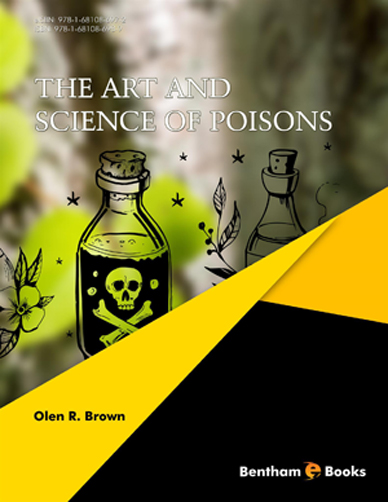Abstract
Poisons, by their nature, conjure up unpleasant thoughts. To the nonscientist, poisons are associated with cowardly acts, sinister motives, painful death, murder, suicide, and deadly plants and animals. To the scientist, poisons are an enigma – how did they come to be – and they are interesting because the study of their mechanism of action can inform us about how the body works and they are a source of medicinals. Poisons also have been the source of historical intrigues, individual and state-sponsored atrocities, and woven into legends and classical stores. In this chapter, three poisons are considered for their horrible and potent effects, as well as their classical and historical importance. Arsenic can be called the “king of poisons” because of its wide use in the 1800s; it was cheap, easily available, did not have a detectable taste when added to food and drink, it could be given surreptitiously in small doses over time with a cumulative effect, its effects mimicked other common illnesses, and until the Marsh test, it was virtually undetectable in the victim. Hemlock is classically known as the poison that killed Socrates and it is biosynthesized by a plant with familiar non-poisonous relatives including the carrot and parsnip. It causes a slow ascending paralysis starting in the feet and ending in death, and was once designated as the “State” poison because of its use as the means of execution in ancient Greece. The asp is a poisonous viper forever associated with Cleopatra. In fact, we do not know what snake caused her death but the story is classical.
Keywords: Albertus Magnus, Arsenic, Asp, Borgias, Charles Lafarge, Cleopatra, George Bodle, Hemlock, Inheritor’s powder, King of poisons, Magic Bullet Theory, Marie Lafarge, Marsh Test, Mees’ Lines, Napoleon Bonaparte, Paul Ehrlich, Salvarsan, Socrates, State Poison.






















